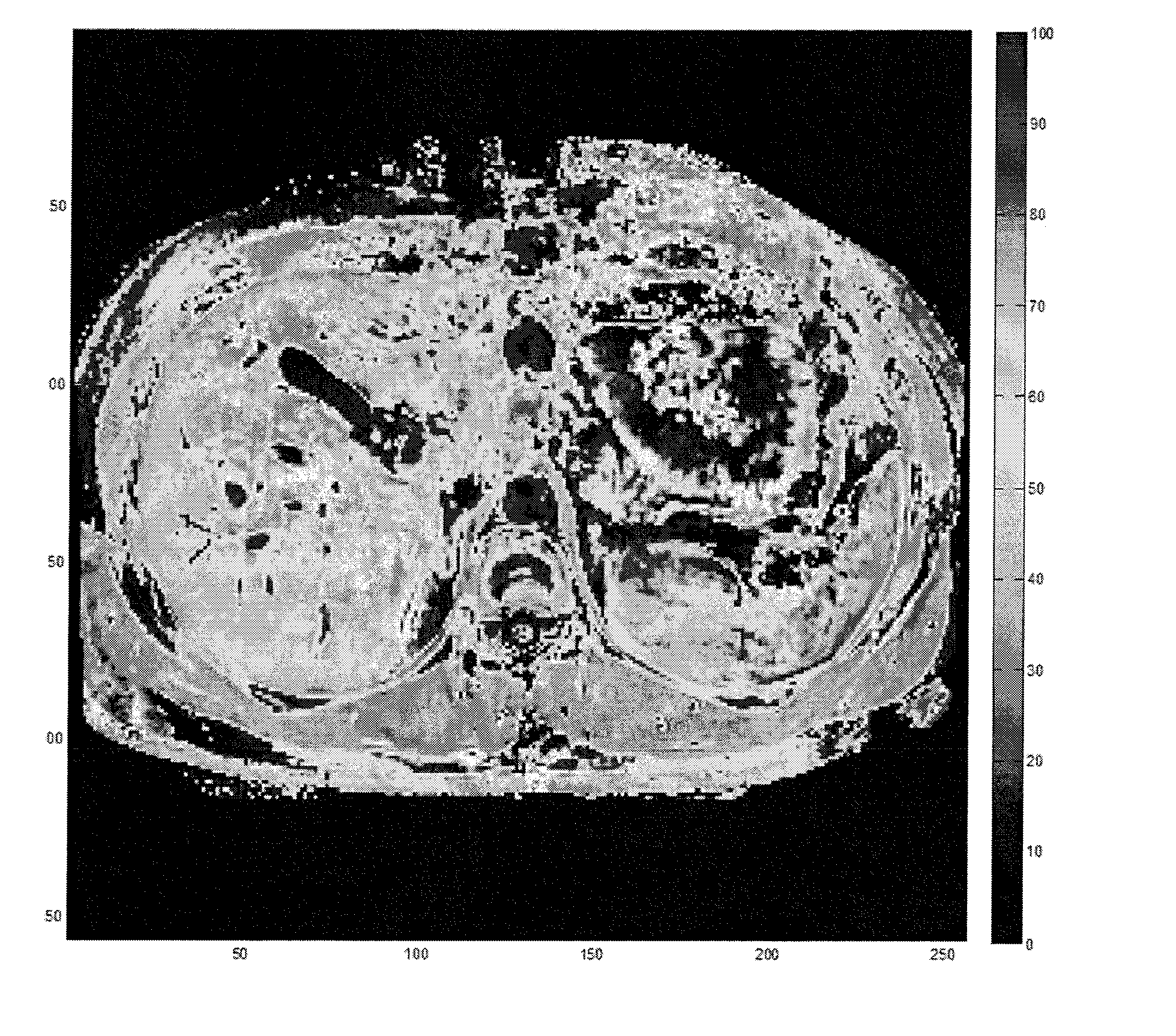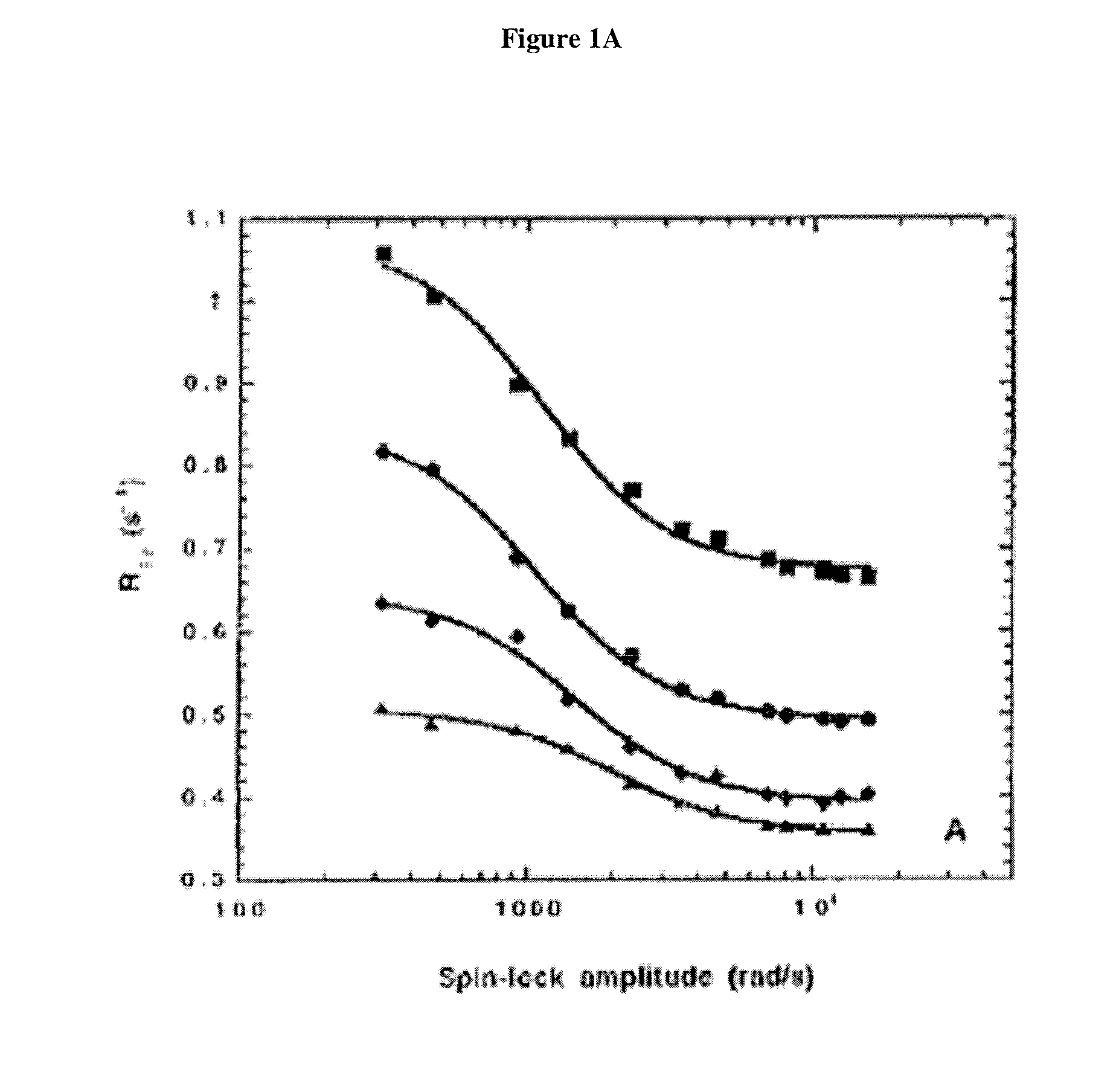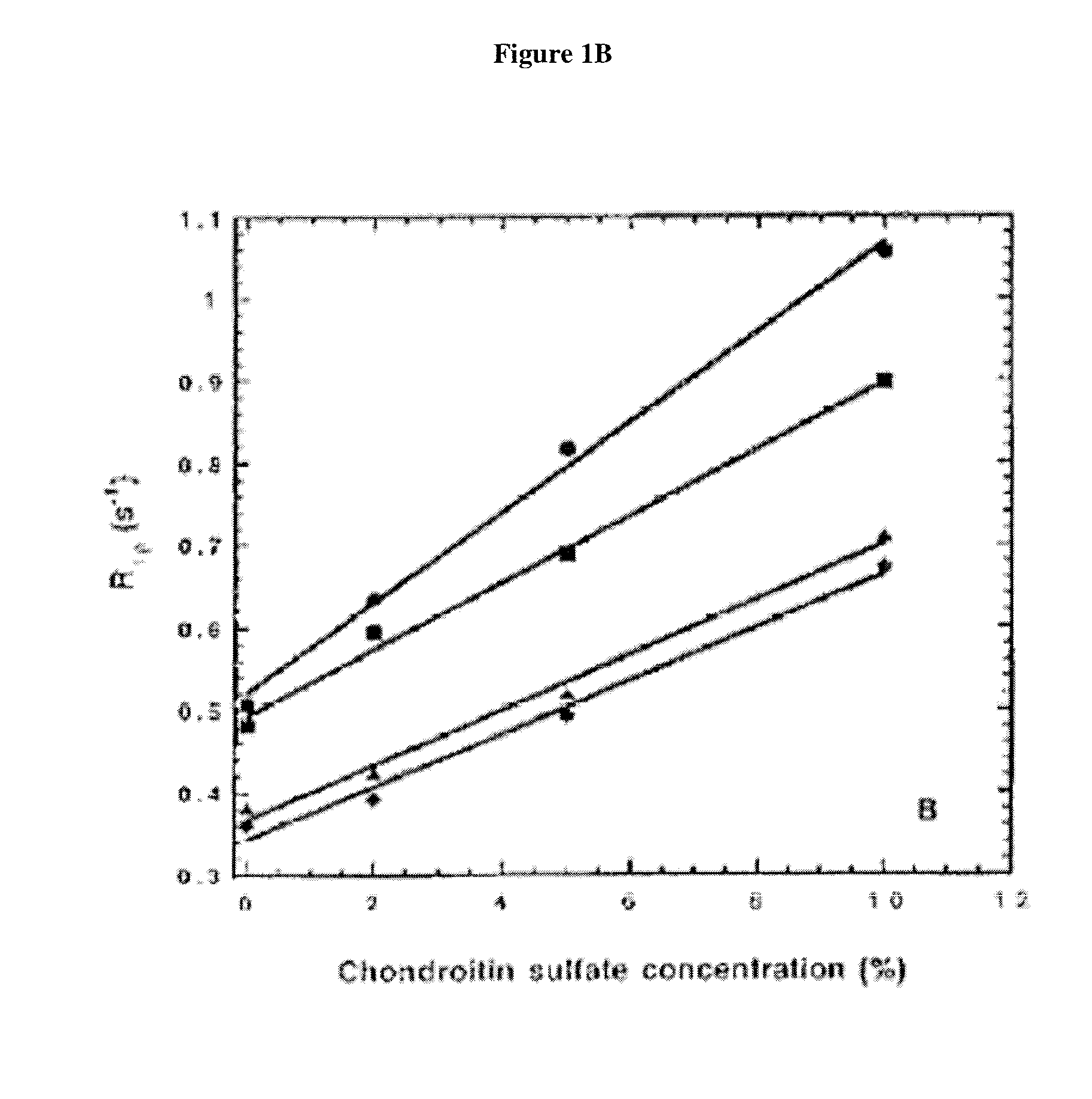T1 rho magnetic resonance imaging for staging of hepatic fibrosis
a fibrosis and magnetic resonance imaging technology, applied in the field of rho magnetic resonance imaging, can solve the problems of high complication rate, mortality, and liver cirrhosis currently a significant cause of death
- Summary
- Abstract
- Description
- Claims
- Application Information
AI Technical Summary
Benefits of technology
Problems solved by technology
Method used
Image
Examples
example 1
[0049]T1ρ magnetic resonance scans were performed on collagen phantoms having different concentrations of Type I collagen, the main protein that increases during fibrosis. A 3T Siemens Trio MRI scanner was used. 1 cm×1 cm×1 cm liver explant samples were placed in a 42-well plate and the plate was mounted on a custom-built coil and imaged. The images are shown in FIG. 2.
[0050]A linear correlation between T1ρ relaxation time and collagen concentration was observed, as shown in FIG. 3. Relaxation times increased as collagen concentrations decreased as shown in FIG. 4.
example 2
[0051]In this example, T1ρ magnetic resonance scans were performed on several different liver explants including normal liver tissue (N), liver tissue with cirrhosis of undetermined cause (UC), liver tissue with cirrhosis caused by primary sclerosing cholangitis (PSC) and liver tissue with cirrhosis caused by biliary atresia. The results are shown in FIG. 5. Normal liver tissue exhibited a T1ρ relaxation time of about 25-30 ms, whereas the cirrhotic liver tissues each exhibited different T1ρ relaxation times thereby showing that the T1ρ relaxation time can differentiate between the degree of matrix abnormality even in cirrhotic livers that would be classified at the same stage (Metavir F4) by standard histological staging systems. FIG. 6 shows a plot of the T1ρ relaxation time versus the progression of liver fibrosis showing that the more extensive the liver fibrosis the longer the T1ρ relaxation time.
example 3
[0052]In this example, T1ρ magnetic resonance scans were performed in vivo on a human liver. An axial image of a human volunteer was performed at the thoracic level using a T1ρ imaging sequence at different spin lock amplitudes and a T1ρ map was generated (FIG. 7). This study showed that the human liver has a heterogeneous distribution of relaxations over its surface with T1ρ values ranging between 25 seconds and 50 seconds. This heterogeneity is most likely correlated with the normal micro-architecture of the liver. Regions of the liver with higher macromolecular content have higher relaxation times. In pathologic conditions, an increase in T1ρ relaxation times in the affected areas is expected, as compared to normal tissue. This example shows the feasibility of the technique in humans.
[0053]From these examples it can be concluded that T1ρ magnetic resonance scans can be employed to quantify changes in collagen concentrations and that the T1ρ signal can be directly correlated with ...
PUM
 Login to View More
Login to View More Abstract
Description
Claims
Application Information
 Login to View More
Login to View More - R&D
- Intellectual Property
- Life Sciences
- Materials
- Tech Scout
- Unparalleled Data Quality
- Higher Quality Content
- 60% Fewer Hallucinations
Browse by: Latest US Patents, China's latest patents, Technical Efficacy Thesaurus, Application Domain, Technology Topic, Popular Technical Reports.
© 2025 PatSnap. All rights reserved.Legal|Privacy policy|Modern Slavery Act Transparency Statement|Sitemap|About US| Contact US: help@patsnap.com



